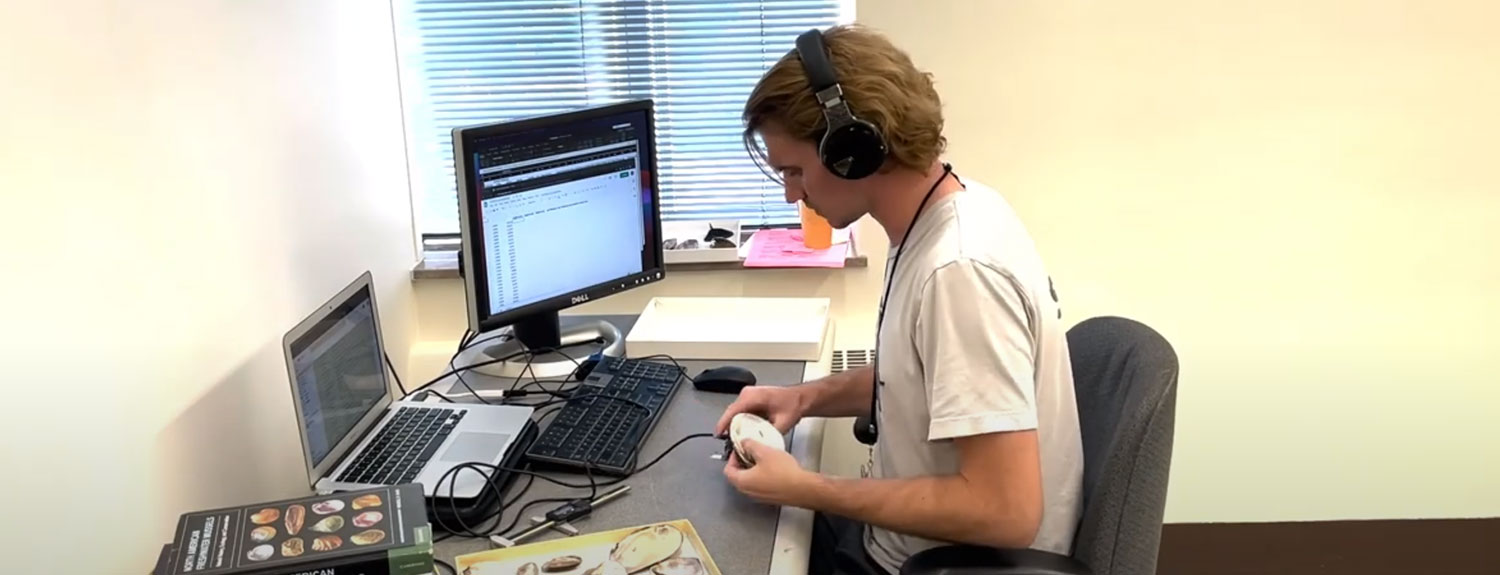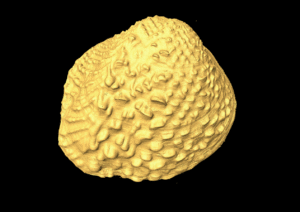
Fellowship at the Smithsonian
Learn more about Sean Keogh's yearlong fellowship at the Smithsonian’s National Museum of Natural History
Published12/21/2021 , by Nehwoen Luogon-Bojkov
Sean Keogh is a PhD student in the College of Biological Sciences at the University of Minnesota. He is currently in Washington D.C. for a yearlong fellowship at the Smithsonian’s National Museum of Natural History. His dissertation research is tackling the feat of understanding how species adapt to their environment—specifically, how freshwater mussels adapt to their habitats.
Sean’s research involves quantifying a variety of morphological characters on the shells of different species and connecting the morphological variation across species to their habitats. To dive deeper into this, Sean uses CT scanning to create a digital reconstruction of the shells to later run analyses. These scans can help explore the answers to questions like, “how do shell shapes vary across species?” or “how is shell shape associated with habitat or stream size?”

Specifically, his research focus at the Smithsonian is understanding how variation in shell sculpture or texture varies across species and across habitats. Sean uses the scans to look at the mussel shells in greater detail. The scans show different characteristics like tubercles—knob-like features on shells—and ridges on the dorsal slope of the shell. Many species have both of these characters. The commonly held hypothesis is that the tubercles found in the middle of the shell are used to help anchor the animal when submerged during periods of high flow that may cause stress to the bottom of the river, where the animals live. The ridge-like structures on the shell have been shown in some experimental studies to help reduce scour around the animal during periods of high flow in river systems. Sean is interested in both of these characters with a focus on how to quantify what occurs during the change in habitat.
While Sean’s research has continued to progress, there were a few trial and error moments. Before deciding on the CT scanning method, Sean had originally thought they would use a different scanning GelSight method. This process involves placing a special gel over the animal’s shell to create deformation of the shell’s surface and acts as a sort of cast. After the cast is created, a photo can be taken to show the details of the shell.

As Sean progresses through his work, he takes the morphological traits from the specimens and adds them to a phylogenetic tree, which is a hypothesis of the evolutionary relationships among species. This task helps to better understand the evolution of traits, like shell sculpture. It also helps to answer questions like “have these traits evolved a single time?” or “have they evolved many times and are associated with habitat transitions?”
Currently, Sean is still in the data collection phase and plans to scan 360 shells from the Smithsonian collection from 120 different species. Take a look at the process for selecting and preparing the specimens for analysis.

